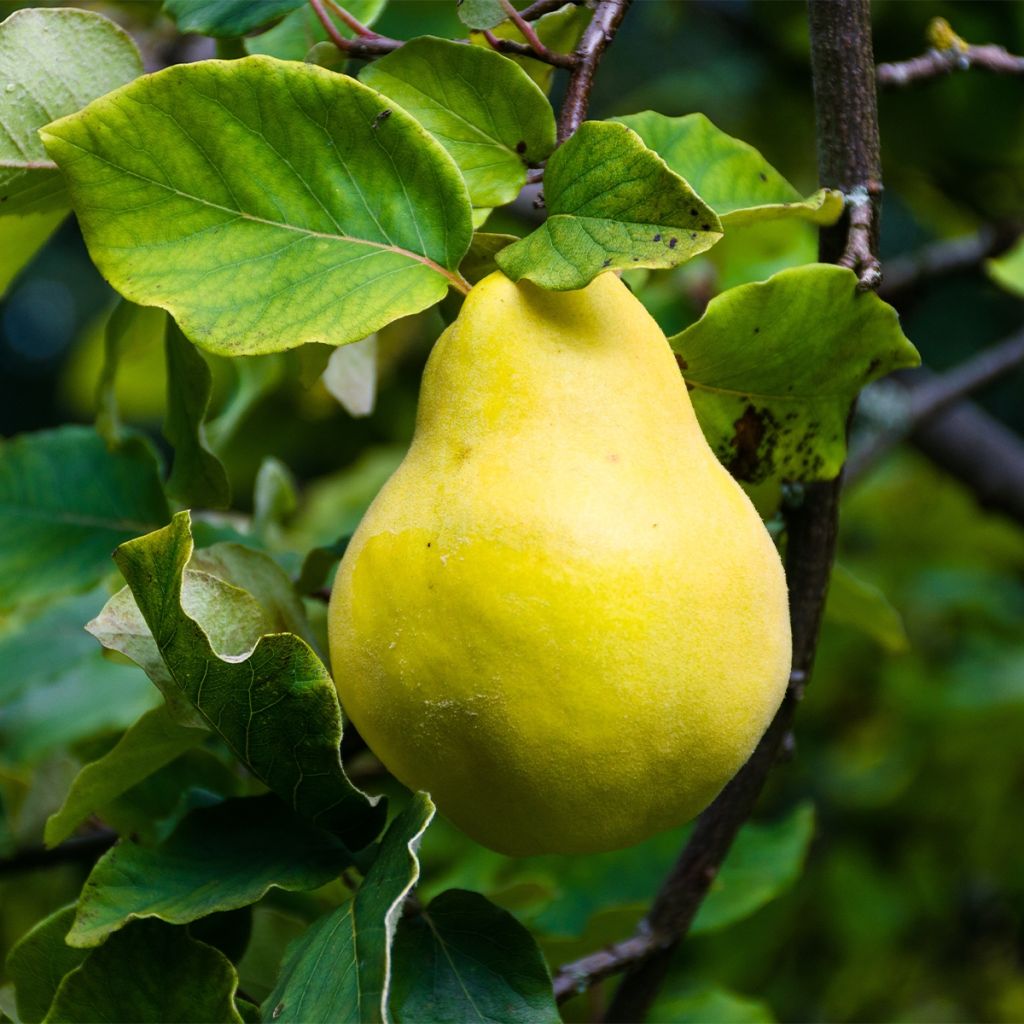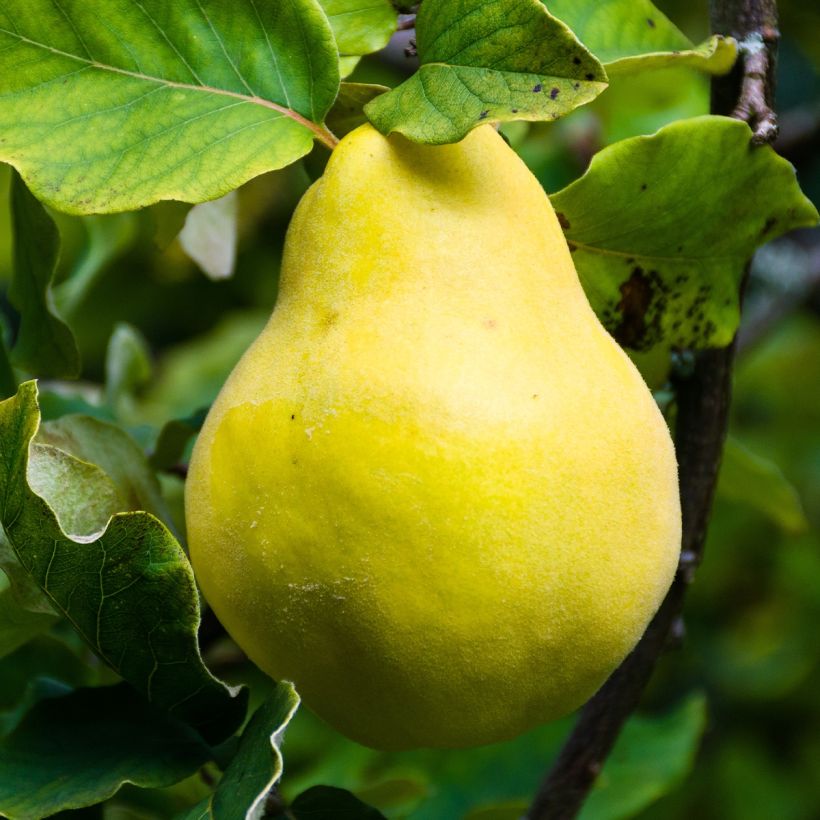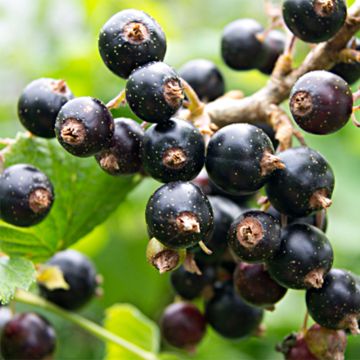

Common Quince - Cydonia oblonga


Common Quince - Cydonia oblonga


Common Quince - Cydonia oblonga


Common Quince - Cydonia oblonga


Common Quince - Cydonia oblonga


Common Quince - Cydonia oblonga


Common Quince - Cydonia oblonga
Common Quince - Cydonia oblonga
Cydonia oblonga
Common quince
la photo correspond plutôt à un néflier du Japon avec des fruits pas mûrs...Erreur de photo ? (PS: je ne l'ai pas acheté car j'ai chez moi de nombreux cognassiers et de nombreux néfliers du Japon qui se multiplient à foison)
Sylviane, 18/11/2021
Special offer!
Receive a €20 voucher for any order over €90 (excluding delivery costs, credit notes, and plastic-free options)!
1- Add your favorite plants to your cart.
2- Once you have reached €90, confirm your order (you can even choose the delivery date!).
3- As soon as your order is shipped, you will receive an email containing your voucher code, valid for 3 months (90 days).
Your voucher is unique and can only be used once, for any order with a minimum value of €20, excluding delivery costs.
Can be combined with other current offers, non-divisible and non-refundable.
Home or relay delivery (depending on size and destination)
Schedule delivery date,
and select date in basket
This plant carries a 6 months recovery warranty
More information
We guarantee the quality of our plants for a full growing cycle, and will replace at our expense any plant that fails to recover under normal climatic and planting conditions.

Description
The Common Quince, in Latin Cydonia oblonga, well known for its quinces harvested in autumn, is also a small, robust and charming tree that is not often considered for beautifying the garden. Its spring flowering covers its beautiful wide and bushy silhouette with large pink flowers, supported by slightly twisted branches. When autumn comes, its foliage turns a beautiful golden yellow before falling. The quince tree deserves to be rediscovered: it easily finds its place as a standalone tree in a small garden, even in a city, in a shrub bed, and works wonders in an informal hedge.
The Quince tree belongs to the Rosaceae family and the genus Cydonia, whereas the Japanese Quince or Flowering Quince belongs to the genus Chaenomeles. It is native to the Caucasus and northern Iran. It is cultivated in many temperate regions of the world. It is a small, vigorous and hardy tree, able to withstand temperatures down to -25°C (-13°F). Its growth is quite fast, reaching an average height of 5m (16ft) and a width of 3m (10ft), and its habit is bushy and fairly wide. The common quince is self-fertile, but fruit production will be greater in the presence of another quince tree that blooms simultaneously.
Its leaves are entire, measuring 6 to 11 cm (2 to 4in) long, with a hairy edge. They are a medium green colour, turning yellow in October. Flowering occurs in April-May depending on the region. The flowers have 5 soft pink petals and measure about 4 cm (2in) wide. After pollination, the fruits form and ripen from October 15th, depending on the region. Quinces have a pear shape and weigh up to 400 grams each. When immature, they are green and covered in a velvety fuzz. They lose this fuzz by the end of autumn when the fruit changes colour and becomes golden yellow. They are very hard fruits, with thick skin, containing firm yellow flesh that is juicy and pleasantly aromatic. The core of the fruit contains brown seeds.
Very easy to grow, the Common Quince likes sunny locations and prefers soil that is fairly rich, deep, and not excessively chalky. Very hardy. However, it needs warmth in autumn for proper fruit ripening. As both a fruit tree and an ornamental tree, the Quince can be planted alone on a lawn, in a hedge, an orchard, or within a flower bed. Pair it with evergreen ceanothus (Ceanothus Concha), Mexican orange (Choisya Aztec Pearl), lilacs, or mock oranges, for example.
Common Quince - Cydonia oblonga in pictures




Plant habit
Fruit
Flowering
Foliage
Botanical data
Cydonia
oblonga
Rosaceae
Common quince
Caucasus
Other Quince trees
View all →Planting and care
Easy to grow, hardy and low maintenance, the Quince tree is satisfied with a sunny exposure and a deep, fairly rich and well-drained soil, without excess limestone. It requires little to no pruning, although a light pruning of the tips at the end of fruiting every 4-5 years will be necessary to maintain balanced branches. Every winter, apply a small handful of wood ash, rich in potash, or compost to improve flowering and fruiting. It can be planted in autumn or early winter, outside the frost period, or in early spring. A fairly long and hot summer is necessary for proper fruit ripening.
To prevent diseases, preventive fungicidal treatments are recommended when the buds burst and in autumn, when the leaves fall. You can also treat when the flowers bloom and when the young fruits form.
Planting period
Intended location
Care
Planting & care advice
-
, onOrder confirmed
Reply from on Promesse de fleurs
Similar products
Haven't found what you were looking for?
Hardiness is the lowest winter temperature a plant can endure without suffering serious damage or even dying. However, hardiness is affected by location (a sheltered area, such as a patio), protection (winter cover) and soil type (hardiness is improved by well-drained soil).

Photo Sharing Terms & Conditions
In order to encourage gardeners to interact and share their experiences, Promesse de fleurs offers various media enabling content to be uploaded onto its Site - in particular via the ‘Photo sharing’ module.
The User agrees to refrain from:
- Posting any content that is illegal, prejudicial, insulting, racist, inciteful to hatred, revisionist, contrary to public decency, that infringes on privacy or on the privacy rights of third parties, in particular the publicity rights of persons and goods, intellectual property rights, or the right to privacy.
- Submitting content on behalf of a third party;
- Impersonate the identity of a third party and/or publish any personal information about a third party;
In general, the User undertakes to refrain from any unethical behaviour.
All Content (in particular text, comments, files, images, photos, videos, creative works, etc.), which may be subject to property or intellectual property rights, image or other private rights, shall remain the property of the User, subject to the limited rights granted by the terms of the licence granted by Promesse de fleurs as stated below. Users are at liberty to publish or not to publish such Content on the Site, notably via the ‘Photo Sharing’ facility, and accept that this Content shall be made public and freely accessible, notably on the Internet.
Users further acknowledge, undertake to have ,and guarantee that they hold all necessary rights and permissions to publish such material on the Site, in particular with regard to the legislation in force pertaining to any privacy, property, intellectual property, image, or contractual rights, or rights of any other nature. By publishing such Content on the Site, Users acknowledge accepting full liability as publishers of the Content within the meaning of the law, and grant Promesse de fleurs, free of charge, an inclusive, worldwide licence for the said Content for the entire duration of its publication, including all reproduction, representation, up/downloading, displaying, performing, transmission, and storage rights.
Users also grant permission for their name to be linked to the Content and accept that this link may not always be made available.
By engaging in posting material, Users consent to their Content becoming automatically accessible on the Internet, in particular on other sites and/or blogs and/or web pages of the Promesse de fleurs site, including in particular social pages and the Promesse de fleurs catalogue.
Users may secure the removal of entrusted content free of charge by issuing a simple request via our contact form.
The flowering period indicated on our website applies to countries and regions located in USDA zone 8 (France, the United Kingdom, Ireland, the Netherlands, etc.)
It will vary according to where you live:
- In zones 9 to 10 (Italy, Spain, Greece, etc.), flowering will occur about 2 to 4 weeks earlier.
- In zones 6 to 7 (Germany, Poland, Slovenia, and lower mountainous regions), flowering will be delayed by 2 to 3 weeks.
- In zone 5 (Central Europe, Scandinavia), blooming will be delayed by 3 to 5 weeks.
In temperate climates, pruning of spring-flowering shrubs (forsythia, spireas, etc.) should be done just after flowering.
Pruning of summer-flowering shrubs (Indian Lilac, Perovskia, etc.) can be done in winter or spring.
In cold regions as well as with frost-sensitive plants, avoid pruning too early when severe frosts may still occur.
The planting period indicated on our website applies to countries and regions located in USDA zone 8 (France, United Kingdom, Ireland, Netherlands).
It will vary according to where you live:
- In Mediterranean zones (Marseille, Madrid, Milan, etc.), autumn and winter are the best planting periods.
- In continental zones (Strasbourg, Munich, Vienna, etc.), delay planting by 2 to 3 weeks in spring and bring it forward by 2 to 4 weeks in autumn.
- In mountainous regions (the Alps, Pyrenees, Carpathians, etc.), it is best to plant in late spring (May-June) or late summer (August-September).
The harvesting period indicated on our website applies to countries and regions in USDA zone 8 (France, England, Ireland, the Netherlands).
In colder areas (Scandinavia, Poland, Austria...) fruit and vegetable harvests are likely to be delayed by 3-4 weeks.
In warmer areas (Italy, Spain, Greece, etc.), harvesting will probably take place earlier, depending on weather conditions.
The sowing periods indicated on our website apply to countries and regions within USDA Zone 8 (France, UK, Ireland, Netherlands).
In colder areas (Scandinavia, Poland, Austria...), delay any outdoor sowing by 3-4 weeks, or sow under glass.
In warmer climes (Italy, Spain, Greece, etc.), bring outdoor sowing forward by a few weeks.






















































